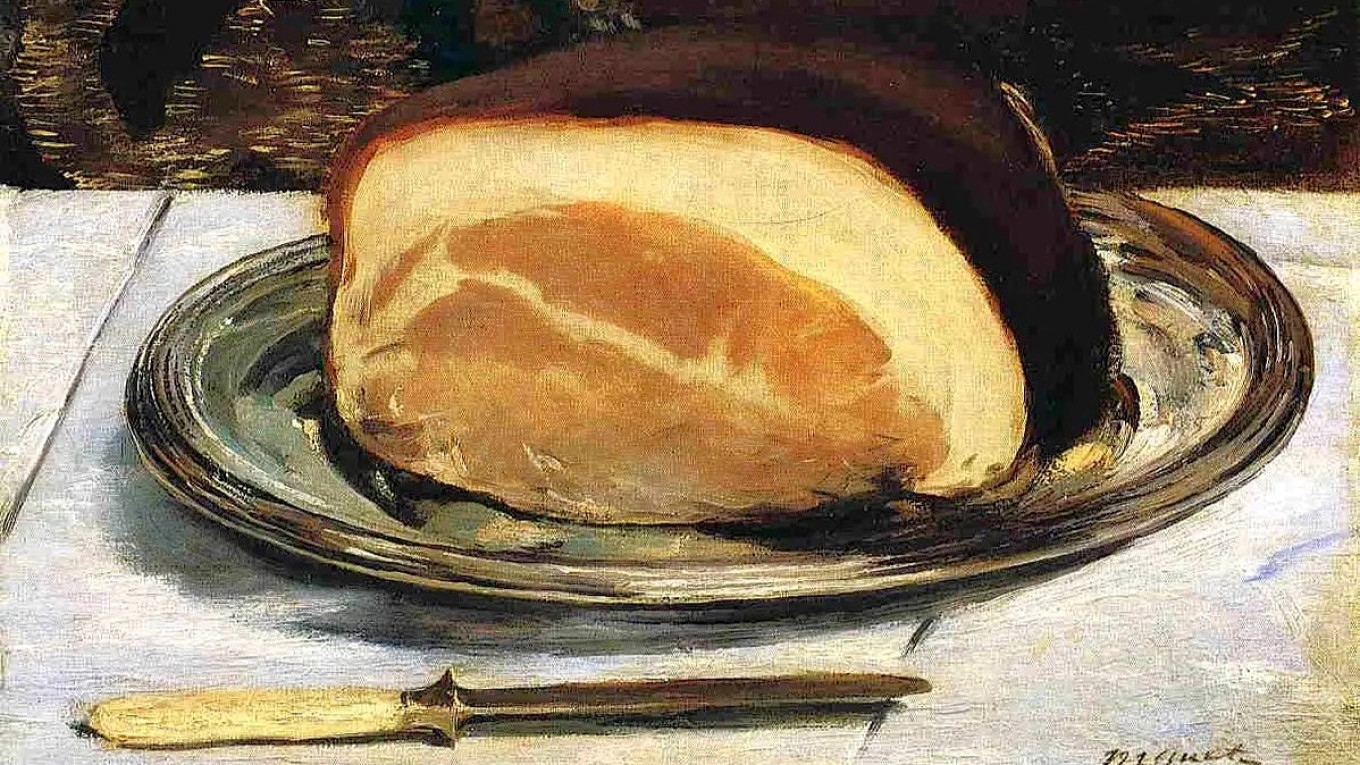“If you live a long time in Russia, something might work out,” said the famous Russian poet and writer Kornei Chukovsky. Time does indeed flow slowly in the Motherland — even in our culinary habits. It took decades to change how we eat, how dishes are served and even the food itself.
By the second half of the 18th century a transition had been made from medieval eating habits to modern meals. There were many reasons for this, including the end of purely subsistence farming, the appearance of new products, and the integration of Western culture that also touched on the home and meals.
The more affluent public began every dinner party at the sideboard: a buffet laid out with light appetizers and vodka in the living room. A special table held appetizers such as smoked sturgeon and salmon, black caviar, fried liver, and hard-boiled eggs.
Then the guests went to the dining room, where hot food was served. This was usually shchi, veal soup, or a soup called rassolnik made with pickles, barley and often chicken.

This was followed by two or three cold dishes: ham, goose with cabbage, roasted marinated meat served with onions, boar's head with horseradish, pike-perch in aspic, boiled sturgeon, or a vinaigrette of poultry, cabbage, cucumbers, olives, capers and eggs.
After the cold dishes, the next course was meat served with sauce: duck with red currant sauce, veal liver with a sauce of chopped lung, tête de veau with prunes and raisins, garlic-studded lamb with a sweet red sauce.

The fourth course consisted of roasts: roasted turkey, duck, goose, suckling pig, veal, grouse, hazel hen, partridge, sturgeon with whitebait or rack of lamb stuffed with buckwheat.
Hot food was always served with coulibiac, sausages, cheese pastries or pirozhki.

But over time, table habits changed. The generation of culinary artists of the mid-19th century set new benchmarks of excellence and aimed for new models of service. This was the dinner of the “Enlightenment.”
Here is how the correspondent of the magazine “Moskvityanin” in 1856 described it:
Four o'clock struck, and we went to the dining room. The guests silently sit down at the table. The first dish already tells you about the art of the cook — the pureed soup of striped perch with burbot roe is excellent.... But here is the second course: turkey with truffles, the dinde trufflé celebrated by epicures all over the world. What flavor! It would awaken the dead.
After this truly famous dish we served sturgeon à la Richelieu, the red sweet sauce perfectly harmonized with the sharpness of capers and olives. Sautéed chicken with mushrooms and scallops and asparagus were worthy representatives of the skill of the sauce chefs. Before the chicken was served, the first bottle of champagne was uncorked. The glasses were filled to rim again when the aristocrat of game, roast pheasant, was served.

The dinner was excellent, and I was savoring the leg of the pheasant and pondering which pastry was worthy to conclude it. But the plates were changed again and the waiter served a ham... I looked at Ivan Ivanovich in bewilderment. He looked at me, smiling slyly.
“No, I cannot imagine having ham after roast pheasant!... Whoever wants it can eat it, but I won’t touch it, even if it is straight from Westphalia. You must be mad to indulge in such a thing at the conclusion of your dinner.”

But imagine my surprise: when this ham was brought to me, I saw that it was not ham at all. It wasn’t salted pork. It was a pastry — a most excellent pastry. The cook took three pink sponge cakes, cut them in the shape of a ham hock, frosted it with fleur d'orange blancmange, which looked deceptively like a layer of fat on top of the ham. And instead of a skin, this blancmange was glazed with sugar and chocolate.
Another half-century goes by. Now it’s the end of the 19th century. Gastronomy is democratized and there is great demand for good cuisine. In the past this demand was fueled only by the affluent nobility, but later it was the will of the broad masses of Russians: the bourgeoisie, merchant classes and military. It coincided with the abolition of serfdom, when many housewives stopped considering it shameful to cook in the kitchen.
So what was the daily menu of the average urban family?

This might be surprising, but it’s actually easy to find out. It was common for 19th-century Russian cookbooks to provide menus for almost every day of the year. Here, for example, is an excerpt from Elena Molokhovets’ cookbook with a list of elegant (“first category”) dinners for December:
“Clear soup of tête de veau served with puff pastries filled with calf brain. Boiled young boar hock, pike-perch with mayonnaise, mushrooms in sour cream. English pudding with chestnut purée. Roast pheasant with salad. Cake. Cheese. Coffee.”
This is a “first-class dinner.” Naturally, this is a menu for an affluent family, but not necessarily aristocratic. A successful engineer or a senior officer of the Russian Navy could receive guests and serve a meal like this.
An ordinary weekday dinner in a bourgeois family might look like one from Molokhovets’ section “fourth category dinners.” A December dinner could be: “Mushroom pie. Clear soup of root vegetables and cabbage. Fried chicken stuffed with walnuts. Ice cream.” Another menu was: “Borshch with sausages. Beef roll with dried mushroom stuffing. Ukrainian dumplings with cottage cheese.”
As you can see, it's not all that different from our menu today. And so we offer a dish that has come down to us from the 19th century: simple, delicious, and festive.
Cod Zrazy
For 5-6 cutlets:
Ingredients
- 500 g (1.1 pound) cod fillet
- 200 g (7 oz) stale white bread, crusts removed
- 1 egg (for the mince)
- 2 small onions
- 1 can of cod liver (230-250 g or 8-9 oz)
- 3 boiled eggs for stuffing
- Melted or vegetable oil
- Breadcrumbs for breading
- Green onion
- Salt, pepper
Instructions
- Prepare the stuffing: Drain the oil from the canned cod liver.
- Finely chop cod liver, boiled eggs and green onions.
- Dice the onions. Set aside half and sauté the other half in oil.
- Cut the bread into cubes and moisten with water.
- Cut fish fillets into 2x2 cm (1 inch) cubes.
- Run the fish, all the onions and bread through a meat grinder.
- Add egg, salt, pepper and mix well. Do not salt heavily because the liver in the stuffing is salty.
- Form the zrazy into ovals and place stuffing in the middle. Roll in breadcrumbs.
- Heat oil in a frying pan and fry zrazy until cooked through and golden, about 3-4 minutes on each side. Add a bit of butter to the frying oil to make the crust golden and crispy.
- Serve with caramelized carrots as a garnish.

A Message from The Moscow Times:
Dear readers,
We are facing unprecedented challenges. Russia's Prosecutor General's Office has designated The Moscow Times as an "undesirable" organization, criminalizing our work and putting our staff at risk of prosecution. This follows our earlier unjust labeling as a "foreign agent."
These actions are direct attempts to silence independent journalism in Russia. The authorities claim our work "discredits the decisions of the Russian leadership." We see things differently: we strive to provide accurate, unbiased reporting on Russia.
We, the journalists of The Moscow Times, refuse to be silenced. But to continue our work, we need your help.
Your support, no matter how small, makes a world of difference. If you can, please support us monthly starting from just $2. It's quick to set up, and every contribution makes a significant impact.
By supporting The Moscow Times, you're defending open, independent journalism in the face of repression. Thank you for standing with us.
Remind me later.







